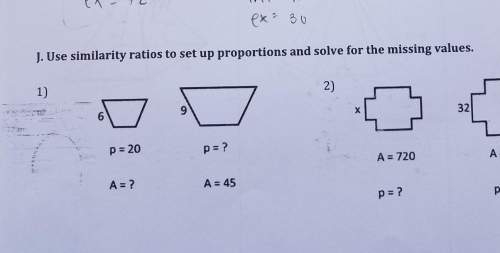Task 2: gears
the gear is one of the oldest mechanical devices. it has been used since ancien...

Mathematics, 25.07.2019 18:10, hannahgrac3
Task 2: gears
the gear is one of the oldest mechanical devices. it has been used since ancient times for its
ability to increase or decrease rotational velocity. when one gear turns another, the outer
portions of the gears are turning at the same linear speed. however, when one gear is
smaller or larger than the other, the speed of rotation will be different for each gear
let's look at an application of gears that you've seen before. on a bicycle, the pedals are
attached to a large gear at the center of the bike, and a chain connects the large gear to a
small gear attached to the rear wheel. the chain does not change the speed of rotation, it
serves only to separate the centers of rotation
consider a bicycle where the large central gear has a radius of 4 inches and the small back
gear has a radius of 2 inches
a. how many inches would a point on the outer edge of the large gear travel in a 150
rotation?
type your response here:
b. what degree of rotation will the small gear undergo when a point on its outer edge travels
the same linear distance determined in part a?
type your response here:

Answers: 2
Other questions on the subject: Mathematics

Mathematics, 21.06.2019 19:00, mustafajibawi1
Eis the midpoint of line segment ac and bd also line segment ed is congruent to ec prove that line segment ae is congruent to line segment be
Answers: 3

Mathematics, 21.06.2019 20:10, morgantisch25
A. use the formula for continuous compounding with the original example: $1000 invested at 2% for 1 year. record the amount to 5 decimal places. use a calculator. b. compare it to the result using the original compound interest formula with n = 365 calculated to 5 decimal places. which has a larger value? explain.
Answers: 1

Mathematics, 21.06.2019 21:30, gonzalezashley152
In a test for esp (extrasensory perception), the experimenter looks at cards that are hidden from the subject. each card contains either a star, a circle, a wave, a cross or a square.(five shapes) as the experimenter looks at each of 20 cards in turn, the subject names the shape on the card. when the esp study described above discovers a subject whose performance appears to be better than guessing, the study continues at greater length. the experimenter looks at many cards bearing one of five shapes (star, square, circle, wave, and cross) in an order determined by random numbers. the subject cannot see the experimenter as he looks at each card in turn, in order to avoid any possible nonverbal clues. the answers of a subject who does not have esp should be independent observations, each with probability 1/5 of success. we record 1000 attempts. which of the following assumptions must be met in order to solve this problem? it's reasonable to assume normality 0.8(1000), 0.2(1000)%30 approximately normal 0.8(1000), 0.2(1000)% 10 approximately normal srs it is reasonable to assume the total number of cards is over 10,000 it is reasonable to assume the total number of cards is over 1000
Answers: 1
Do you know the correct answer?
Questions in other subjects:

History, 05.02.2020 05:57



Chemistry, 05.02.2020 05:57












